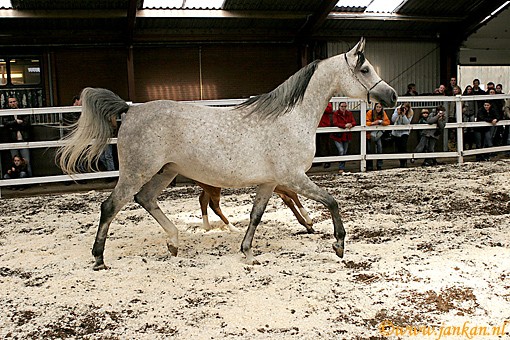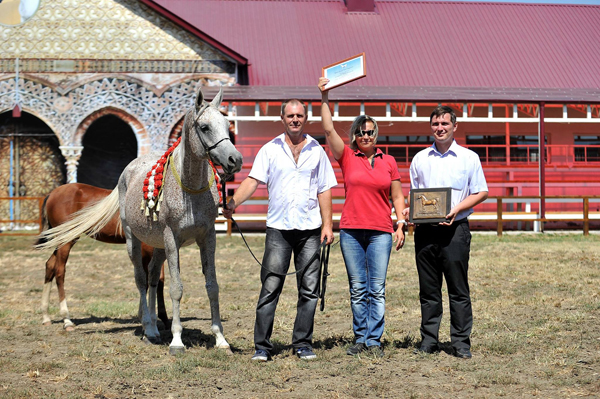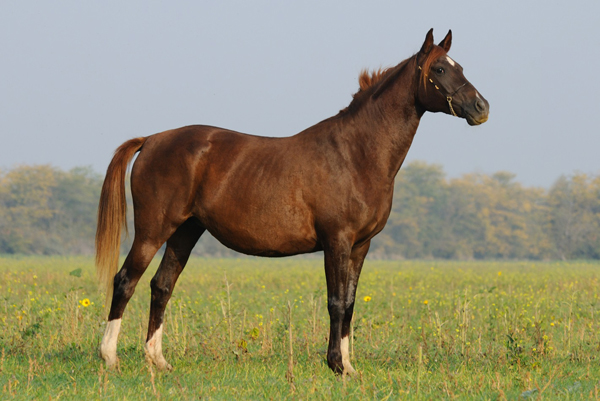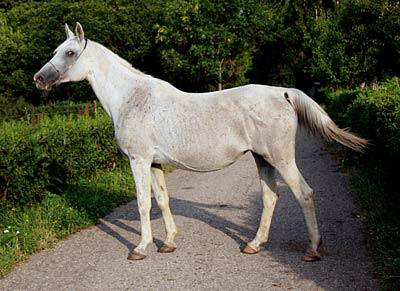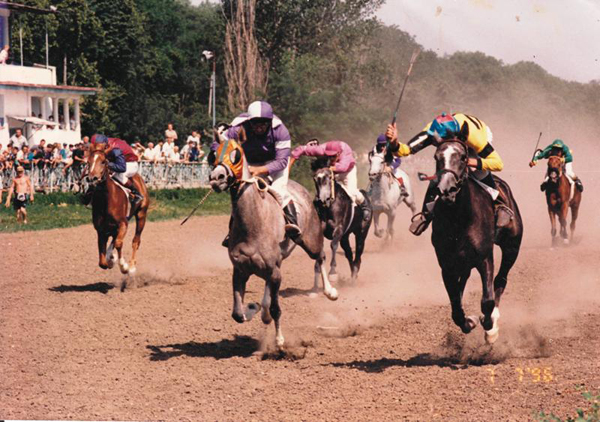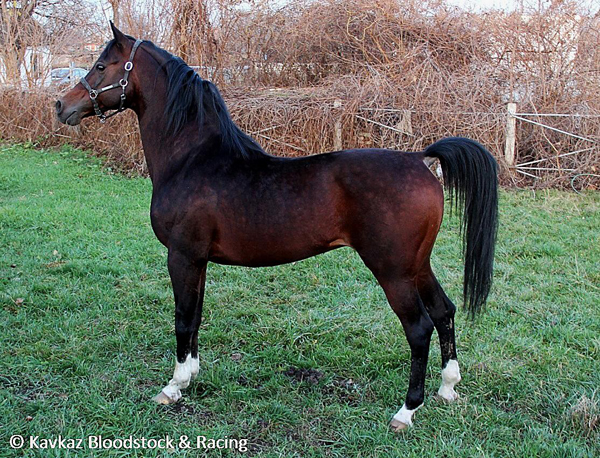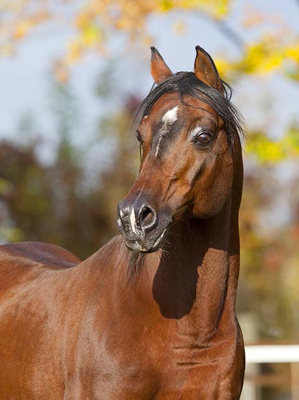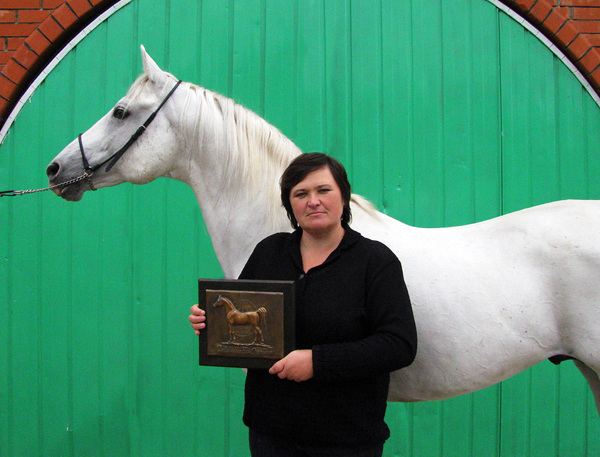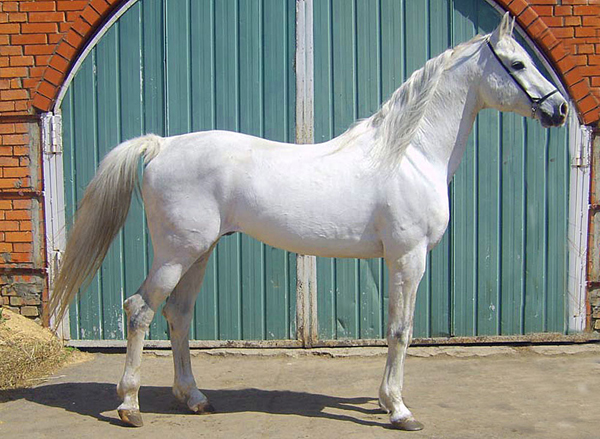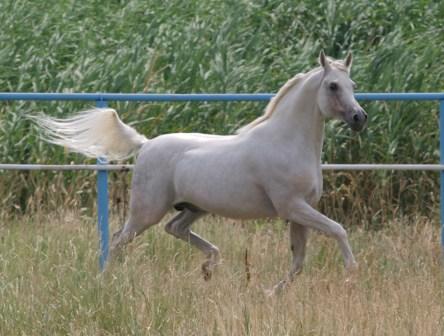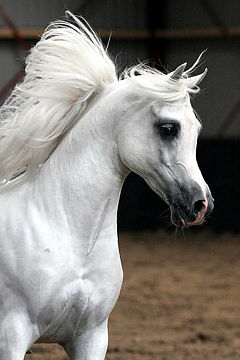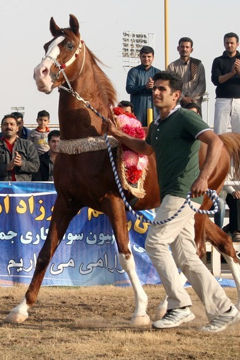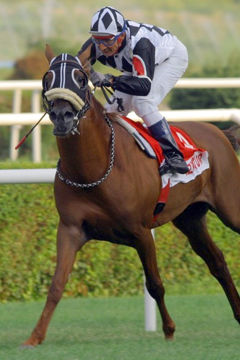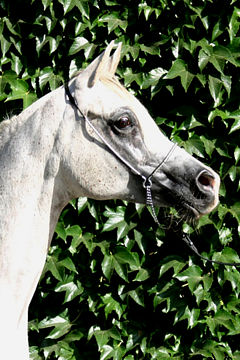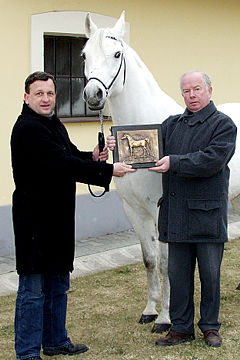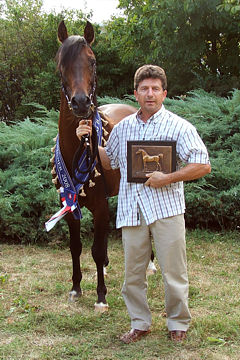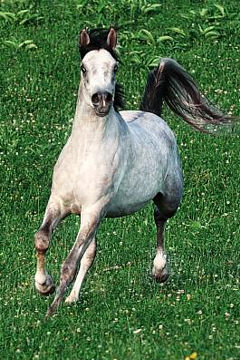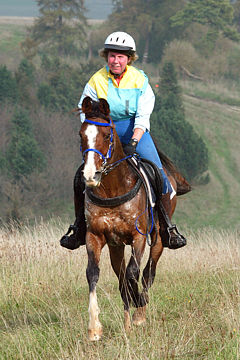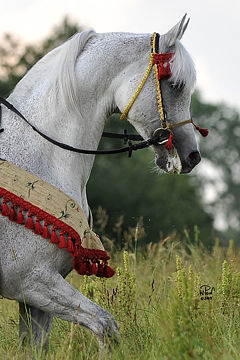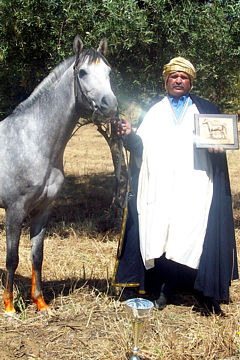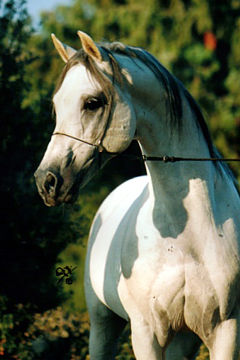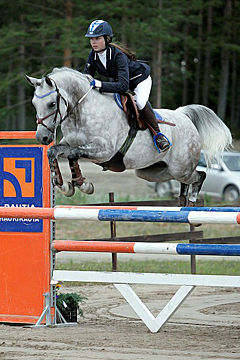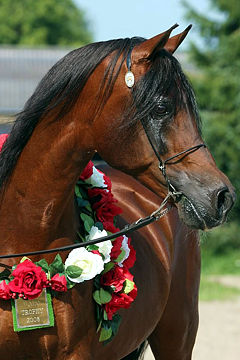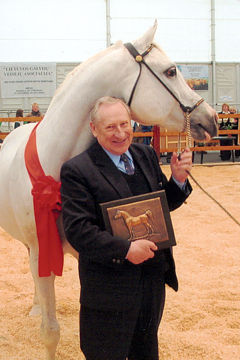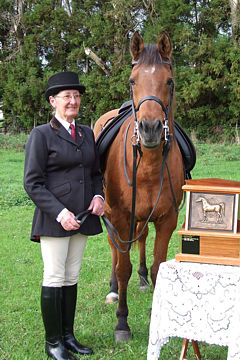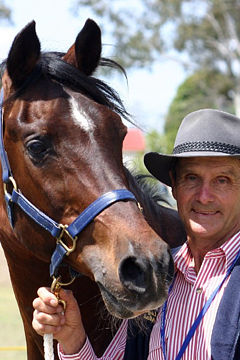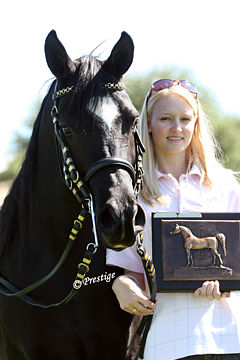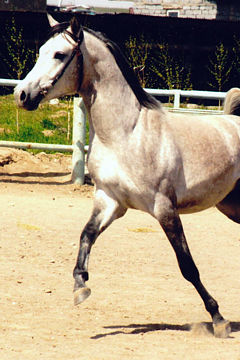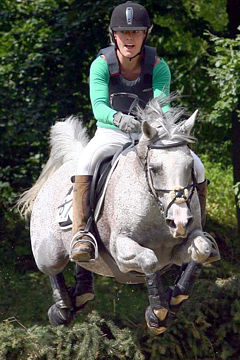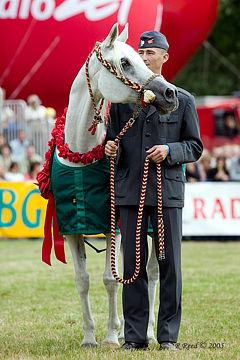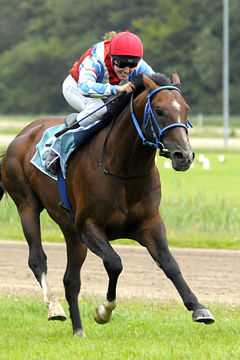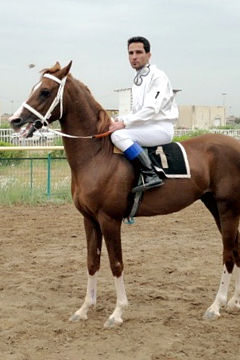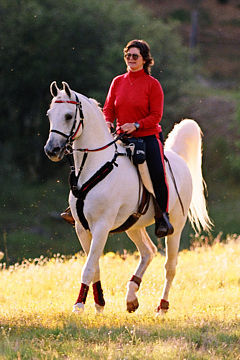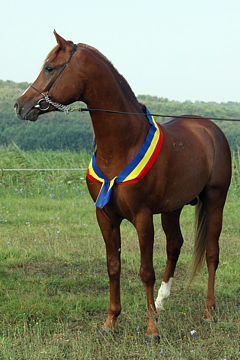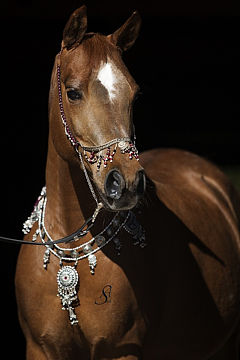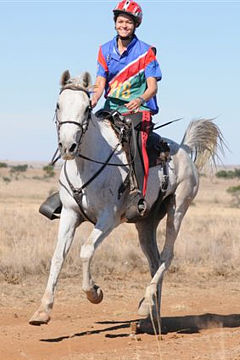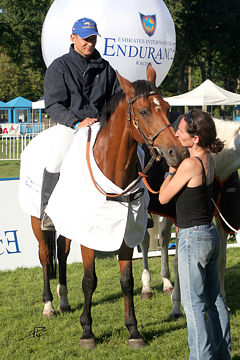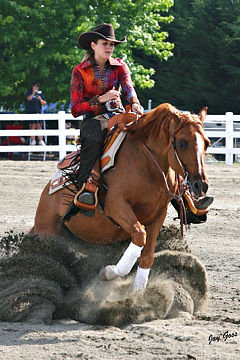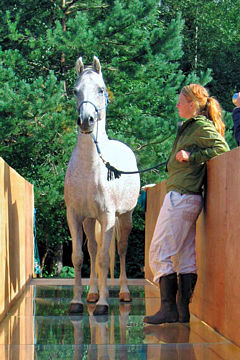![]()
Member Report from Russia
2022 REPORT
The number of purebred Arabian horses in Russia is small, currently 2 studs and 2 breeding farms and 82 private owners are engaged in breeding horses of this breed, where there are 85 stallions and 435 mares. From 280 to 291 foals were registered annually between 2019 and 2021.
The small number of foals is explained by the decrease in the number of mares involved in breeding. Owners with a small number of mares do not want to burden themselves with the care of obtaining and raising foals, and some conditions do not allow. Moreover, there have been difficulties with their realization. Russia exported 82 horse in 2019, and only 33 horses in 2021. The import of Arabian horses has also decreased, in 2021 only 4 horses were imported.
In recent years, public organizations have been created in Russia, the “Association of Arab Horse Breeders”, as well as the “National Society of Arab Horses”, whose members are also representatives of the studbook. As a result, Arab shows according to ECAHO plans have become more widely held in the country. If earlier they were held mainly during the International Equestrian Exhibitions in Moscow “Equiros”, St. Petersburg “Hipposphere”, now they are held on the territory of the Tersk Stud and other farms during the holidays “Open Days”, where a huge number of people from nearby cities and towns gather, in particular in this connection, the number of horses participating in the show has also increased. In 2021, 240 horses took part in them, and the number of participating farms and owners also increased. So at the Tersk Stud in 2021, the Russian Championship was held with the participation of 42 horses, “Athletic Cup”, where 72 horses took part and the “Rising Star of the Tersk Stud” where 43 horses took part. 8 Arabian horses took part in the International Equestrian Exhibition “Iposphere” in the city of St. Petersburg, the “National Society of the Arabian Horse” held the 18th Championship of Russia with the participation of 30 horses.
Every year in Russia, at four racetracks in the cities of Moscow, Kazan, Pyatigorsk and Krasnodar, Arabian horses are tested in flat races, where from 200 to 230 horses race. On average, 40% of them are 2-year-old, also 40% are 3-year-old horses and 20% are 4-year-old horses and older. In Russia, endurance races are held by the Equestrian Sports Federation, in which horses of the Arabian breed, grown at domestic studs and farms, are also widely represented. In Russia, an annual evaluation of Arabian horses is carried out, and by the decision of the registering authorities, worthy breeding stallions and mares who have made a valuable contribution to the breed (who have given champions, Derby winners, whose descendants have replenished the stock of stallions and mares in studs) are awarded the “WAHO-Trophy” prize. Of course, the presentation of this prize is a worthy valuable award and makes the breeders of the winners proud, while others are interested and eager to win it. But in 2019 and 2020, the prize was not awarded due to the Covid-19, and in 2021, the prize was awarded to Nurik a stallion born in 2004 by Komandor out of Nauka. He was born in the Alina farm, belonging to the private owner Ezdekov M.V. Nine offspring were received by Nurik, 3 fillies were taken in the breeding stock. The stallion belongs to the Korej line, the grandson of well-raced stallion Drug, the winner of the European Prize (category A, Warsaw Poland), the Big All-Union Derby Prize (gr.1), the USSR Prize (gr.1), who took 2nd place in the S.M. Budyonny Prize (gr.1), twice the Prize Elite (gr.II), Big Summer (gr.II).
A number of horse-breeding magazines are published in Russia, such as “Equestrian World”, “Golden Mustang”, “Argamak”, “Hippodrome”, “Equestrian Park”, “My Horse”, “Hippology and Veterinary Medicine”, as well as one of the oldest equestrian magazines “Konevodstvo I Konny Sport”, founded in 1842. This scientific-production and sports-methodical journal, popular among horse breeders, was established by the Ministry of Agriculture of Russia and is published by the All-Russian Research Institute of Horse Breeding. In their publications, magazines do not ignore the issues of Arab horse breeding. Horse breeding exhibitions are held annually, where seminars and conferences are held on the topics such as “Horse breeding: an overview of the current state and prospects for development”. “Breeding accounting in horse breeding in Russia”, where registrars make reports on “The current state of Arabian breed in Russia”, “Features of breeding accounting in Arabian breed”, “Results of the introduction of a breeding program to improve Arabian breed of horses”.
In addition, during the show, master classes are held with the participation of specialists from the Netherlands, Italy and other countries. The audience consists of horse breeders, owners of horses, clubs, farms, heads of equestrian schools, equine specialists and students. The institute’s website has published the “Regulations on the State Stud Book of horses of Arabian breed”, which includes the points of the mandatory WAHO rule, and the provisions of the rules are also brought to the owners of horses.
Since 2009, Russia has completely switched to microchipping and DNA testing of horses. DNA testing is carried out in the laboratory of the Institute of Horse Breeding, which has been a member of ISAG since 1983, it regularly undergoes comparison tests and has a license from the Ministry of Agriculture of Russia. Testing of genetic disorders of horses is available in the laboratory of the Institute. A study of the condition of breeding stallions by CA, and mares by CA and SCID was conducted.
An agreement with the Ministry of Agriculture means it is prohibited to export horses from the country without a microchip and DNA testing, as well as their participation in trials at racetracks. Based on the conclusion of the Institute (register) on the expediency of exporting or importing specific horses of the Arabian breed, the Ministry of Agriculture gives the appropriate permission.
According to the WAHO decision, the use of artificial insemination of mares and embryo transfer is also allowed in Russia. But in practice, only artificial insemination is used, embryo transfers have not been carried out in the Arabian breed.
The last volume of Arabian stud book, volume 13, was published in 2018, which included foals born between 2013-2016. In 2022, it prepared for publication, volume 14 where the offspring born between the years 2017-2020 are entered. Part of the stud book is published in a typographic way, the rest in pdf format for distribution between registers.
There is an electronic database working online and numbering 11578 horses of Arabian breed. The address of our website WWW.BASE.RUHORSES.RU
2019 REPORT
Russian Delegates were unable to attend the 2019 WAHO Conference but sent us this report.
There are 3 studs, 2 breeding farms and 67 private owners, 80 sires and 435 brood mares of Arabian breed in total, in Russia. In 2016 235 foals were registered, in 2017 242 foals were registered, and in 2018 242 foals were registered in the Russian Arabian Stud Book.
The decreasing number of foals that are registered is explained by a decrease in the number of mares involved in breeding. Owners who have a small number of mares do not want to burden themselves with the care of breeding and raising foals, and some of the owners just don’t have conditions for breeding. Moreover, recently they have had difficulties with selling their horses. Russia exported 121 Arabian horses in 2015 while in 2018 they only exported 40 horses. Imports of Arabian horses also decreased, only 4 horses were imported in 2018.
In recent years the Association of Horse Breeders of Arabian Horses has been established in Russia, as well as the National Society of the Arabian Horse, the representatives of the Russian Arabian Stud Book are among the members. As a result, the Arabian shows have become more widely held according to ECAHO rules. Previously shows were held mainly during the International Equestrian Exhibitions in Moscow “Equiros”, in St. Petersburg “Hipposphere’, now they are held on the territory of Tersk Stud and some other farms during the Open Days holidays, where a huge number of people from nearby cities and towns can see Arabian horses. The number of horses participating in the shows has also increased. In 2018, 240 horses participated in shows, the number of participating owners` also increased. In 2018, the Championship of Russia was held at Tersk stud in which 57 horses participated, at “Athletic Cap”, 70 horses were represented and at “Rising Star of Tersk stud” – 61 horses of Arabian breed.
In the Nizhny Novgorod region the second Summer Festival of the Arab horse at the breeding farm “Three Graces” in which 11 horses took part. In the city of St. Petersburg, 5 Arabian horses took part in the framework of the International Horse Exhibition Hipposphere; the 16th Russian Championship was held in Moscow run by the National Society of the Arabian Horse where 32 Arabians were represented. Also in Moscow, within the framework of the International Equine exhibition “Equiros” 2 Arabian horses took part in the parade of representatives of horse breeds, and two Arabian horses that received the diplomas of laureates took part in the exhibition “Golden Autumn 2018”. In racing, every year Arabians are tested at four hippodromes in the cities of Moscow, Kazan, Pyatigorsk and Krasnodar. In 2018 220 horses took part in the races. On average, 40% of them are horses of 2 years, also 40% of horses of 3 years and 20% of horses of 4 years and older. Also in recent years some horses of the Tersk Stud have raced in Poland.
Endurance races in Russia are organized by the Equestrian Federation, in which Arabian horses bred in both private and state studs are widely represented, with much success.
An annual assessment of Arabian horses is carried out regularly, and the outstanding sires and broodmares are awarded the WAHO Trophy by the decision of the Registry, for valuable contributions to the breed – for example they have produced champions, hold speed records, have won classic races, or became best in the breeding stock. Of course, the WAHO-Trophy is an important award and causes pride among breeders of winners and increases interest and a desire to win it among others. So in 2015, the prize was awarded to the stallion Vivat (1999 chestnut, Narmat / Volshebnaia) from the Equiline Breeding Farm, and in 2016 to the mare Borodina (2000 grey, Piligrim / Molvina) from Tersk stud. In 2017 the prize was not awarded. In 2018 the prize was awarded to the chestnut stallion Nizami, (WH Justice / Nairobi). The stallion was born in 2007 at Tersk stud, owned by Stacy Schrader of “Three Graces Farm”. Nizami is a breeding sire, he is a two-time Champion of Russia in juniors and seniors, as well as taking part in dressage competitions, he is also the sire of champions Bazhena Tersk, Arnie and Karenin.
There are a number of equine journals published in Russia, such as “Horse World”, “Golden Mustang”, “Argamak”, “Hippodrome”, “Horse Park”, “My Horse”, “Hippology and Veterinary”, as well as one of the oldest equestrian journals, “Horse Breeding and Equestrian Sport”, founded in 1842. This research and production journal, popular among horse breeders, was established by the Ministry of Agriculture of Russia and is issued by the All-Russian Research Institute for Horse Breeding. In the publications, articles on purebred Arabian horse breeding and activities are often featured.
Seminars and conferences are regularly organized on the following themes: Horse-breeding: a review of the current state and development prospects, Registration in horse breeding in Russia, The current state of the Purebred Arabian breed in Russia, Results of the implementation of the breeding program for improving the Purebred Arabian horse breed. In addition, during the show, master classes for teaching breeders are held with the participation of specialists from Holland and Italy. The audience is comprised of horse breeders, owners of horses, clubs, farms, equestrian school leaders, specialists, and students.
Since 2009, Russia has used DNA testing of horses. DNA testing is carried out by the Laboratory of Genetics of the Institute for Horse Breeding, which has been a member of ISAG since 1983. It regularly undergoes Comparison Tests and is certified by the Ministry of Agriculture of Russia. On agreement with the Ministry of Agriculture, the export of horses without a microchip and DNA testing, as well as their participation in testing at hippodromes, is prohibited. On the basis of the conclusion of the Institute for Horse Breeding (Registry) on the expediency of export or import of horses of a purebred Arabian breed, the Ministry of Agriculture grants an appropriate permit.
According to the WAHO decision, the use of artificial insemination of mares and embryo transfer are also allowed in Russia. But only artificial insemination is used in practice; no embryo transfer has yet been performed in the Arabian breed.
The last volume XII of the Russian Arabian Stud Book was published in 2014, which included the mares produce till 2012 inclusive. Volume XIII is being prepared and will include foals of 2013-2016 years of birth. A number of Stud Books will be published in print, the rest in pdf format for distribution between registrars.
There is an electronic database that works online and includes information of 10,068 purebred Arabian horses.
Address of our website WWW.BASE.RUHORSES.RU
REPORT MADE AT 2014 WAHO CONFERENCE:
Mrs. Natalia Kiseleva, translator for Dr. Ruslan Khalilov, Russia: Mr. President, Executive Committee members and fellow delegates. Russia is represented by Dr. Ruslan Khalilov, Registrar of the Russian Arabian Stud Book, I am pleased to present this report on his behalf. First of all, we want to say many thanks to the organizers of this WAHO Conference for the great work they have done and to the Qatar Racing and Equestrian Club for their great hospitality.
I will now report on the Arabian horse affairs in our country. To begin with it should be mentioned that now there are 3 state studs, 3 breeding farms and 52 private owners in Russia. The breeding stock of Arabians totals 68 sires and 290 broodmares, the total living population is about 2,000. The yearly foal registrations decreased from 264 in 2011, to 219 in 2013. This is the result of reduction of number of broodmares used for breeding. The owners that have a small number of mares don’t want to burden themselves with the care of receiving and breeding of foals because of some difficulties with their realization. Here are some figures: a few years ago Russia exported from 50 to 70 Arabian horses yearly, now we export only about 12-13 Arabians a year. The reduction of the import can also be seen. In 2013 only 8 Arabian horses were imported to Russia, while in 2011 the number of imported Arabians had been 17.
Due to organization of the Association of Breeders of Arabian Horses in 2010, RASB is the member of the Association, the geography of Arabian shows is getting wider now. Arabian shows were usually organized at International Equestrian Exhibitions “Equiross” in Moscow and “Hipposphere” in St. Petersburg. Now Arabian shows are run on the territory of such studs as Tersk, Veles and other places during the festivals, in the presence of a large number of people. The number of Arabian horses participating in shows increases constantly. 74 Arabian horses participated in shows in 2011 and 141 horses were at show rings in 2013.
Arabian horses are tested at four race courses in Russia: in Moscow, in Kazan, in Pyatigorsk and in Krasnodar. About 200-220 Arabians race at the age of two (40%) , at the age of three (40%), and at the age of four and older (20%) in Russia each year. Last years endurance racing became more popular due to activity of Federation of Equestrian International of Russia. Regional and All-Russian endurance races are held more often now.
All the population of the Arabian horses in Russia has been evaluated since 2005 and the WAHO Trophy is annually awarded by the Registering Authority to the most remarkable Arabian horse according to the results of the year. In 2012 the mare Aiova, owned by a private owner, became the winner of WAHO Trophy in Russia. Undoubtedly awarding the WAHO Trophy causes the sense of pride in the owners and interest of other people.
A number of equestrian magazines and journals are published in Russia, one of them is the oldest journal “Horse Breeding and Equestrian Sport” that has been issued since 1842 in Russia. This is a scientific and methodological journal established by the Ministry of Agriculture of Russia, and is published by the All-Russian Research Institute for Horse Breeding. The problems and sport activities of Arabians are widely reported and discussed in the journals.
People have an opportunity to enjoy the variety of popular activities for Arabians as well as for other horse breeds at annual horse exhibitions. Besides this, different seminars and conferences on horse breeding, with reviews of the current state and prospects for development, are regularly organized for breeders, owners of Equestrian Clubs and breeding farms, heads of Equestrian Schools, specialists and students.
Since 2009 Russia has been microchipping and using DNA testing of Arabian horses. We use the Laboratory of Genetics of the All-Russian Research Institute for Horse Breeding that is an ISAG member since 1983 and has Rank 1 on the results of the last Comparison Test. In coordination with the decision of the Ministry of Agriculture it is not permitted to export or to test Arabians on the racetracks without microchip and DNA test. On the basis of RASB conclusion the Ministry of Agriculture gives the permission on export or import of each Arabian horse.
In 2014, volume 12 of the Russian Arabian Stud Book has been published that includes the produce of mares till 2012 inclusive. The next volume 13 will have been compiled by 2017. The stud book volumes are issued as .pdf files and as printed books in two languages, Russian and English. We also have an online database containing the information for more than 8,000 Arabian horses at our website www.base.ruhorse.ru. Thank you very much for your attention.
REPORT MADE AT 2009 WAHO CONFERENCE:
Mr. Igor Botchkarev, Russia: I would like to inform you that the head of our delegation is Alexander Timchenko, the General Director of Rosplemkonzavod Association.
The traditions of breeding Arabian horses in Russia take their roots in the 19th century. These traditions are linked to such famous Russian breeders as Count Sherbatov and Count Orlov. The first Arabian horse stud book was published in 1901 in Russia, the follow up edition came out in 1903. Our WAHO recognized stud book started to be published since 1965 and 10 editions have been published to date, the last volume was published in 2007 and contains information on the horses that were born up to 2004. Additional supplements are issued during the time between the stud book editions which contain the breeding information for the current year. Our next stud book is due in December this year, 2009.
Today there are about 850 purebred Arabians living in Russia, among them 65 stallions, 227 broodmares and the rest are horses of different ages. These horse belong to 41 different breeders. The major breeding farm is still Tersk Stud Farm, which was founded in 1921. The second biggest is Khrenovoe Stud Farm which was founded more than 230 years ago, in 1776, by Count Orlov. Other breeders own in the range of 2 to 15 broodmares.
In 2008, 195 mares were bred and 149 foals were registered from the 2007 breeding season. 2 horses were imported from France, none were exported in 2008 however 6 mares were taken abroad temporarily for breeding. In 2007, 291 broodmares were bred and 66 stallions were active in breeding, 217 foals were registered from the 2006 breeding season. 9 horses were imported and 9 were exported. We use immuno-genetics markers through blood and DNA typing and we issue WAHO recognized passports for the control and identification of Arabian horses.
Arabian horse-racing continues to be popular in Russia, the major racetracks are located in Moscow, Kazan, Pyatigorsk and Krasnodar. A new state-of-the-art racetrack will start operation this year. 190 horses took part in 95 races in 2008. Two ECAHO shows were organized in Russia last year, one in Moscow and one in St. Petersburg. 14 endurance competitions were organized in 2008 by the Russian Equestrian Federation. 36 Arabian horses took part in those rides, which represent about 20% of the total number of competing horses.
The 2008 WAHO Trophy for Russia was awarded to the mare Nahodka, she was born in 1994 sired by Drug out of Nasechka. She has excellent exterior features which are in line with the type of Russian Arabian horses bred at Tersk Stud Farm and is an outstanding broodmare. Thank you for your attention.
REPORT MADE AT 2007 WAHO CONFERENCE:
The last volume, number 10, of the Russian Arabian Stud Book was compiled and published in April 2007. It contains the information of stallions, mares and progeny for the period 2001-2004. It is ready for distribution and will be sent out in May this year.
The Russian Arabian Stud Book registered 228 purebred Arabian foals in 2005, and 231 in 2006. There has not been any significant change in the number over the last 5 years. The number of active breeding stallions and broodmares have also been stable over the last few years, with 35-40 sires and 23-250 broodmares in the country.
State studs and private farms are now experiencing hard times with the export and sale of purebred Arabian horses inside the country. The most successful is the Tersk Stud in this regard. Annual auctions in the Netherlands have been greatly conducive to the international sale of Russian horses, with 281 purebred Arabian horses exported from Russia during the period 2001-2005. Among them 23 horses to Germany, 152 to Holland, 12 to Switzerland, 21 to England, 10 to Norway, 15 to France, 11 to Spain, 4 to Denmark, 1 to Belgium, 2 to Greece, 1 to Saudi Arabia, 3 to Azerbaijan, and 26 to Mongolia. Tersk stud exported a total of 255 Arabians from the above numbers since 2001-2005. Most horses – 70 – were exported in 2002, but each year since then the number of sold horses has decreased, So 59 were sold in 2003, 54 were sold in 2004, but only 34 in 2005. 26 horses were sold by “Oros” Stud to Mongolia in 2005. We consider the reason for this decrease in sales may be explained by the situation in the world market. The number of imports to Russia is not large, only 15 horses were imported during the period 2004-2006, among them 5 from France, 7 from the United Arab Emirates, 1 from Poland, 1 from Morocco and 1 from Jordan.
To be registered for the first time, foals must be parent verified and blood-typed. Starting from 2007 we have started DNA typing of all foals born. We are not micro-chipping horses yet, but it is in our plans for the future. It is allowed by our “Rules and Regulations for Keeping the Russian Arabian Stud Book” to use Artificial Insemination of Arabian mares, but the method is not widely used in practice.
The most popular activities for Arabians include flat races which take place at 5 racetracks in Russia. We test our Arabians on the racecourse at the age of 2, 3, 4 and older, about 200 horses take part in racing each year. We also organize 2 ECAHO affiliated shows each year, one is held in St. Petersburg and 1 is held in Moscow, and we have seen the number of participating horses growing every year at these shows.
To promote the purebred Arabians in Russia, the Association ‘Rosplemkonzavod’ and ZAO ‘Sokoros’ and the Russian National Arabian Horse Society have recently issued the magazine “Arabian Review” to give information about all activities in the Arabian breed, such as racing and showing.
In 2007 Russia reported 245 foals registered, with 9 imports and 9 exports. Racing and showing remain the most popular activities for Arabians in Russia.

